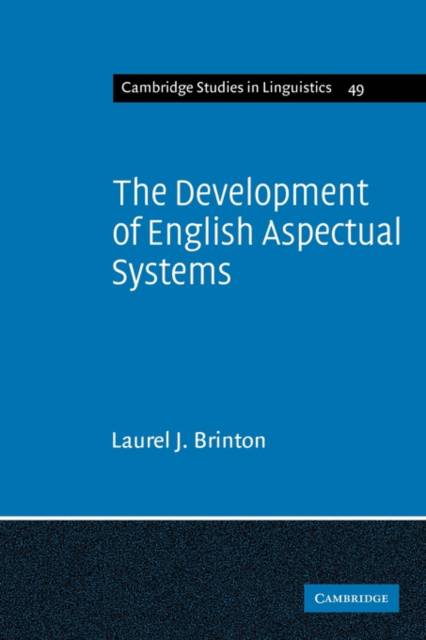
Door een staking bij bpost kan je online bestelling op dit moment iets langer onderweg zijn dan voorzien. Dringend iets nodig? Onze winkels ontvangen jou met open armen!
- Afhalen na 1 uur in een winkel met voorraad
- Gratis thuislevering in België vanaf € 30
- Ruim aanbod met 7 miljoen producten
Door een staking bij bpost kan je online bestelling op dit moment iets langer onderweg zijn dan voorzien. Dringend iets nodig? Onze winkels ontvangen jou met open armen!
- Afhalen na 1 uur in een winkel met voorraad
- Gratis thuislevering in België vanaf € 30
- Ruim aanbod met 7 miljoen producten
Zoeken
The Development of English Aspectual Systems
Aspectualizers and Post-Verbal Particles
Laurel J Brinton
€ 89,45
+ 178 punten
Omschrijving
Laurel Brinton's important study of the development of English aspectual systems provides an exceptionally clear and systematic account of an area of syntax and semantics that continues to be the subject of both terminological and notional confusion. Not only has the study of aspect been confused, but the variety of aspectual markers in English has also been unduly neglected. In this book Dr Brinton convincingly demonstrates the need to make clear distinction between 'aspect' and 'aktionsart' and betwen the aspectual meaning of individual forms and the meanings that result from the combination of verbs, auxiliaries, particles, and adverbs, as well as nominal arguments within a sentence. This exceptionally clear account of two sets of aspectual forms points to the coherence and systematicity of aspectual marking in Modern English. The wide range of theoretical issues explored makes this a significant contribution to the synchronic study of aspect and to the diachronic study of language change. The book will undoubtedly have applications cross-linguistically.
Specificaties
Betrokkenen
- Auteur(s):
- Uitgeverij:
Inhoud
- Aantal bladzijden:
- 320
- Taal:
- Engels
- Reeks:
- Reeksnummer:
- nr. 49
Eigenschappen
- Productcode (EAN):
- 9780521116756
- Verschijningsdatum:
- 16/07/2009
- Uitvoering:
- Paperback
- Formaat:
- Trade paperback (VS)
- Afmetingen:
- 152 mm x 229 mm
- Gewicht:
- 471 g

Alleen bij Standaard Boekhandel
+ 178 punten op je klantenkaart van Standaard Boekhandel
Beoordelingen
We publiceren alleen reviews die voldoen aan de voorwaarden voor reviews. Bekijk onze voorwaarden voor reviews.











